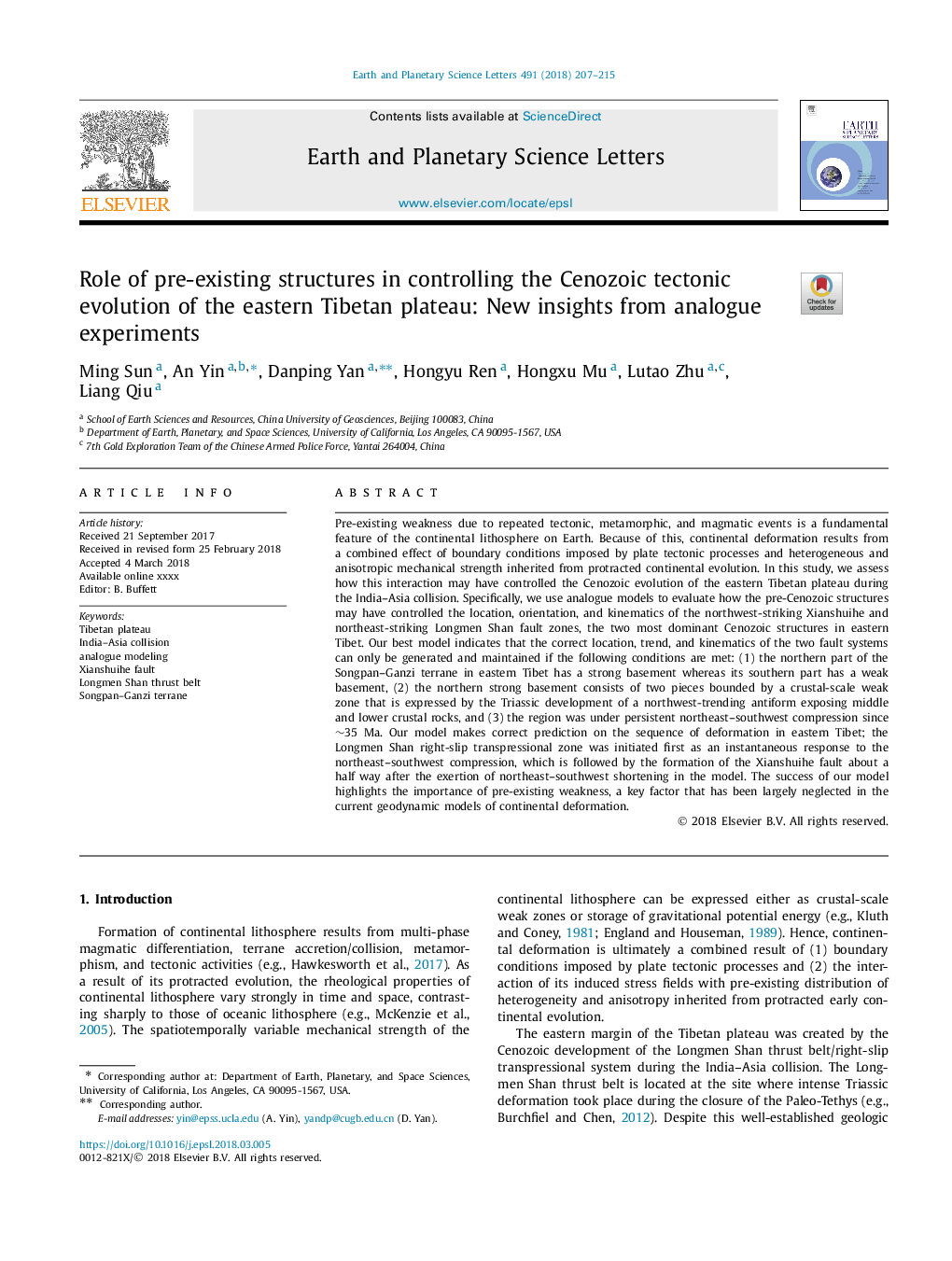| کد مقاله | کد نشریه | سال انتشار | مقاله انگلیسی | نسخه تمام متن |
|---|---|---|---|---|
| 8906951 | 1634665 | 2018 | 9 صفحه PDF | دانلود رایگان |
عنوان انگلیسی مقاله ISI
Role of pre-existing structures in controlling the Cenozoic tectonic evolution of the eastern Tibetan plateau: New insights from analogue experiments
ترجمه فارسی عنوان
نقش سازه های پیشین در کنترل تکامل تکتونیکی کنوگوسن در فلات شرقی تبت: بینش جدید از آزمایش های آنالوگ
دانلود مقاله + سفارش ترجمه
دانلود مقاله ISI انگلیسی
رایگان برای ایرانیان
کلمات کلیدی
موضوعات مرتبط
مهندسی و علوم پایه
علوم زمین و سیارات
علوم زمین و سیاره ای (عمومی)
چکیده انگلیسی
Pre-existing weakness due to repeated tectonic, metamorphic, and magmatic events is a fundamental feature of the continental lithosphere on Earth. Because of this, continental deformation results from a combined effect of boundary conditions imposed by plate tectonic processes and heterogeneous and anisotropic mechanical strength inherited from protracted continental evolution. In this study, we assess how this interaction may have controlled the Cenozoic evolution of the eastern Tibetan plateau during the India-Asia collision. Specifically, we use analogue models to evaluate how the pre-Cenozoic structures may have controlled the location, orientation, and kinematics of the northwest-striking Xianshuihe and northeast-striking Longmen Shan fault zones, the two most dominant Cenozoic structures in eastern Tibet. Our best model indicates that the correct location, trend, and kinematics of the two fault systems can only be generated and maintained if the following conditions are met: (1) the northern part of the Songpan-Ganzi terrane in eastern Tibet has a strong basement whereas its southern part has a weak basement, (2) the northern strong basement consists of two pieces bounded by a crustal-scale weak zone that is expressed by the Triassic development of a northwest-trending antiform exposing middle and lower crustal rocks, and (3) the region was under persistent northeast-southwest compression since â¼35 Ma. Our model makes correct prediction on the sequence of deformation in eastern Tibet; the Longmen Shan right-slip transpressional zone was initiated first as an instantaneous response to the northeast-southwest compression, which is followed by the formation of the Xianshuihe fault about a half way after the exertion of northeast-southwest shortening in the model. The success of our model highlights the importance of pre-existing weakness, a key factor that has been largely neglected in the current geodynamic models of continental deformation.
ناشر
Database: Elsevier - ScienceDirect (ساینس دایرکت)
Journal: Earth and Planetary Science Letters - Volume 491, 1 June 2018, Pages 207-215
Journal: Earth and Planetary Science Letters - Volume 491, 1 June 2018, Pages 207-215
نویسندگان
Ming Sun, An Yin, Danping Yan, Hongyu Ren, Hongxu Mu, Lutao Zhu, Liang Qiu,
